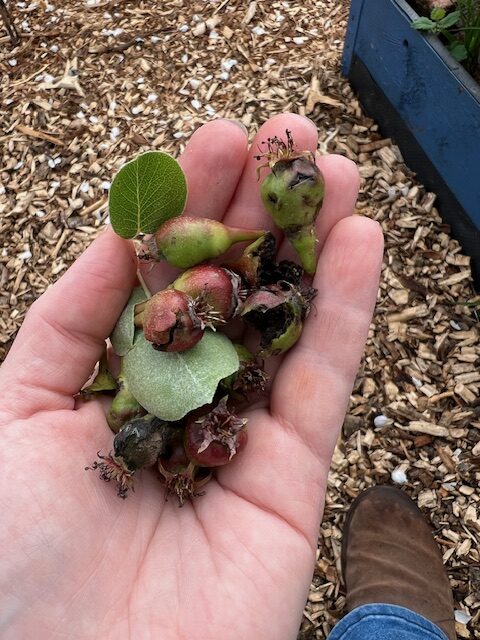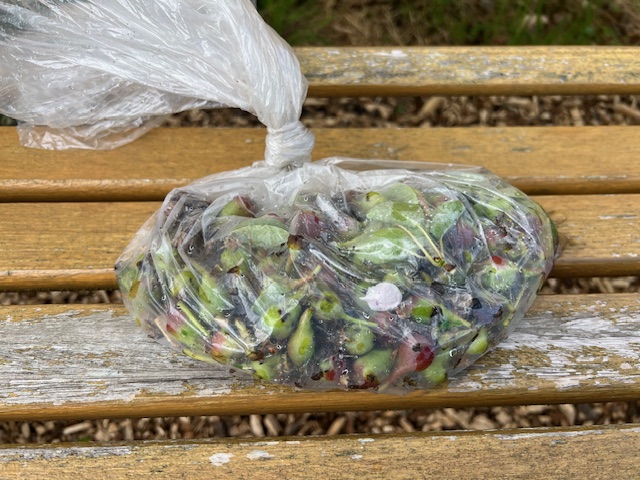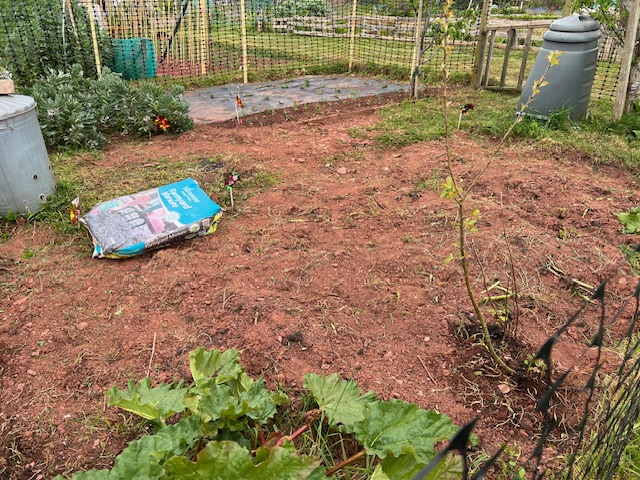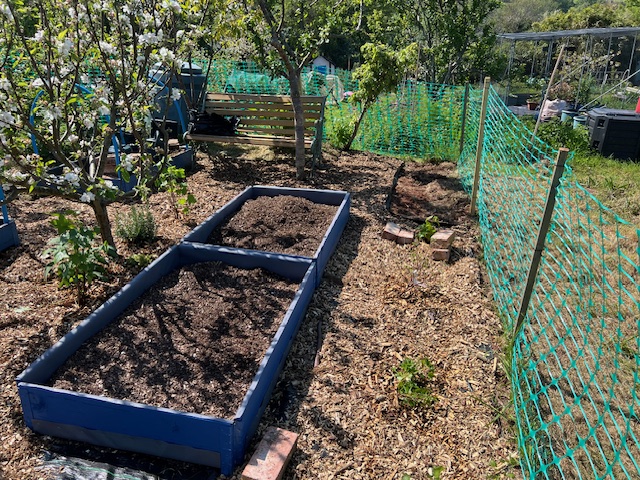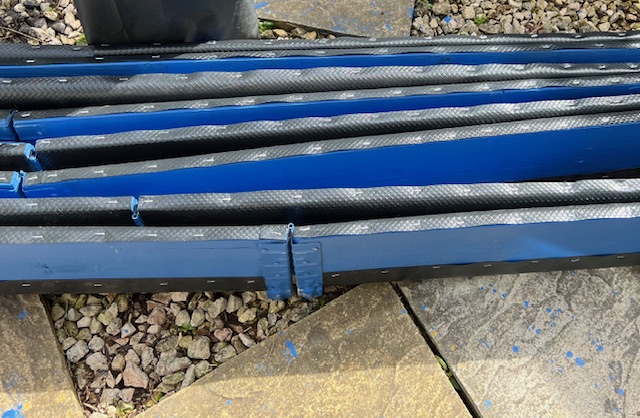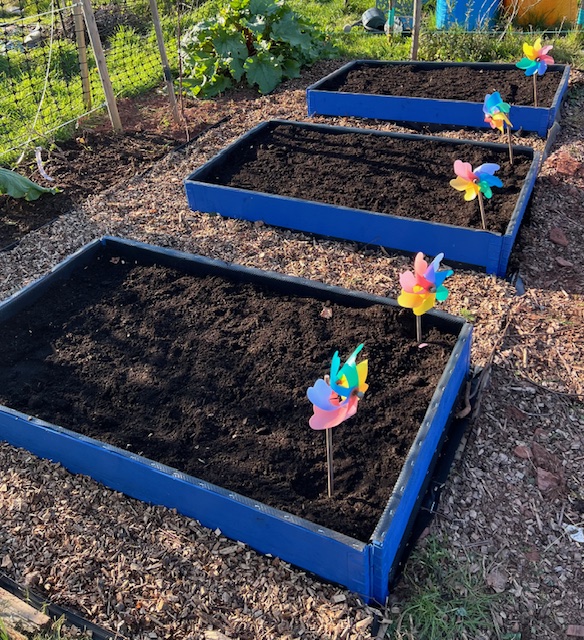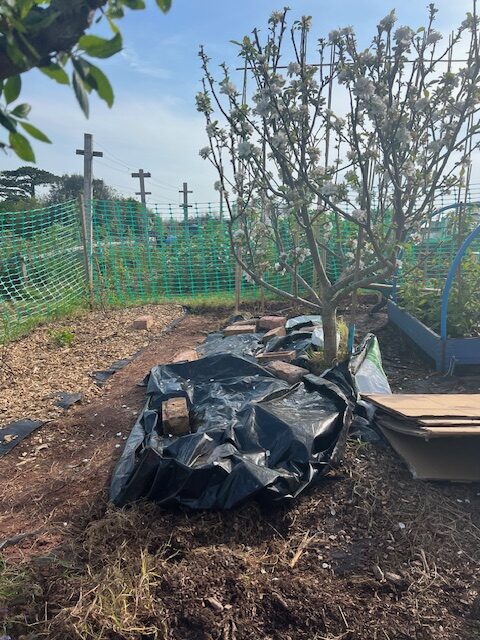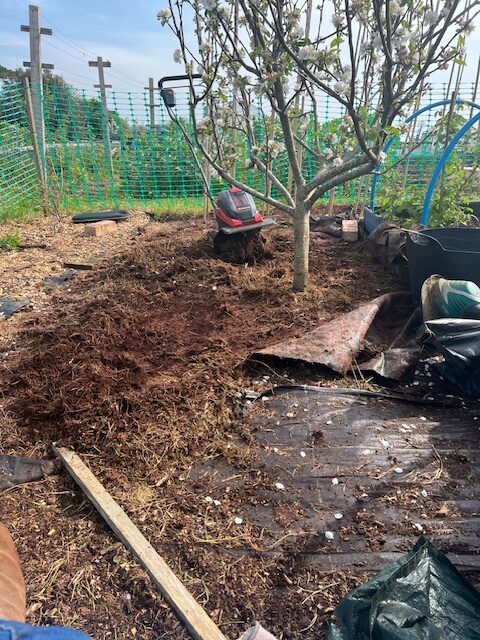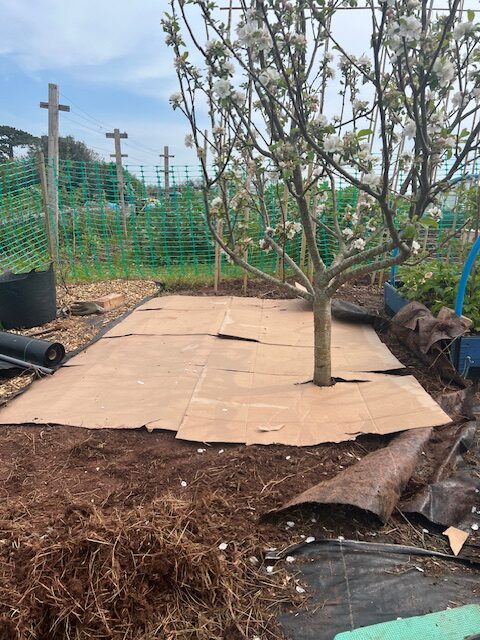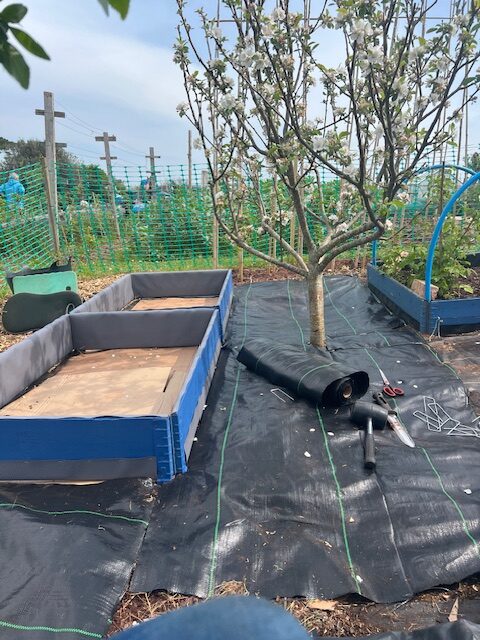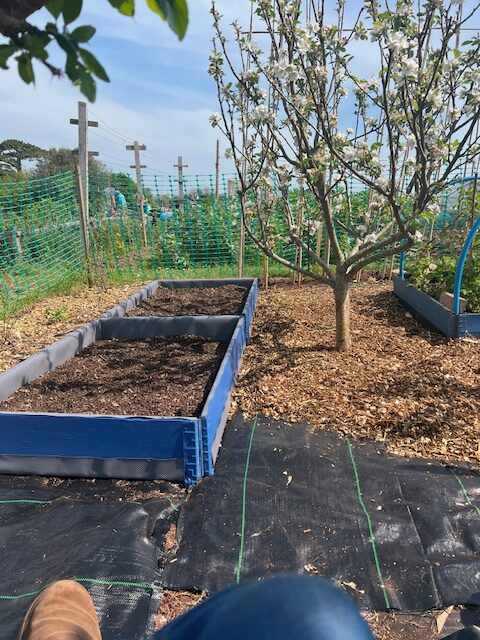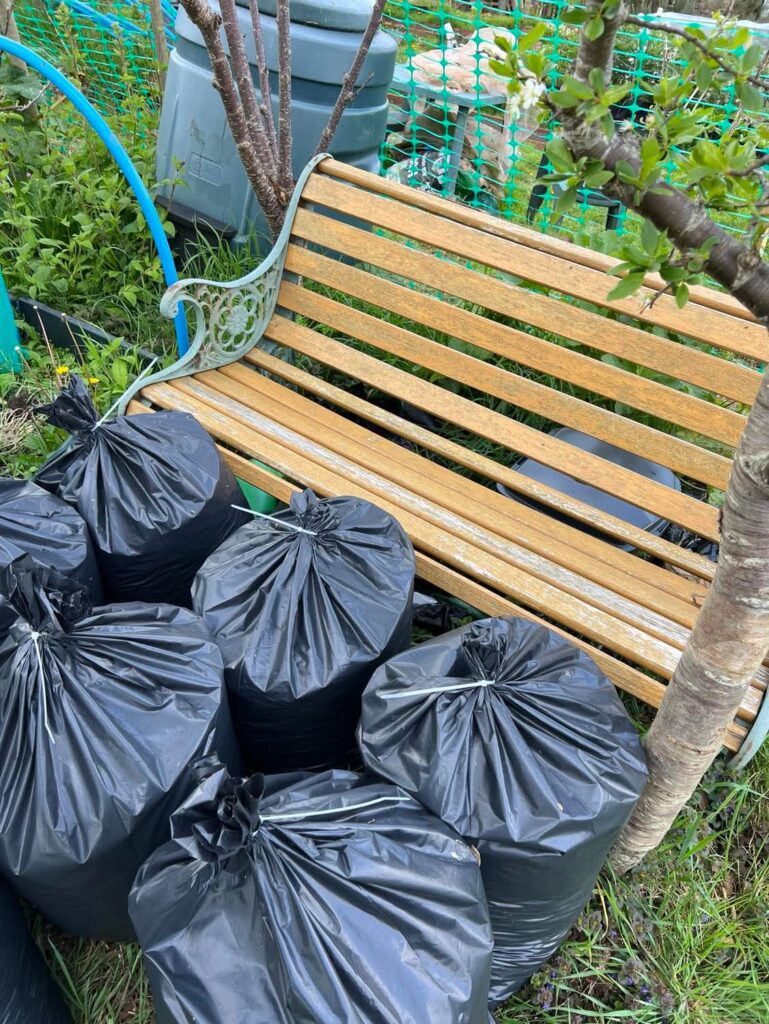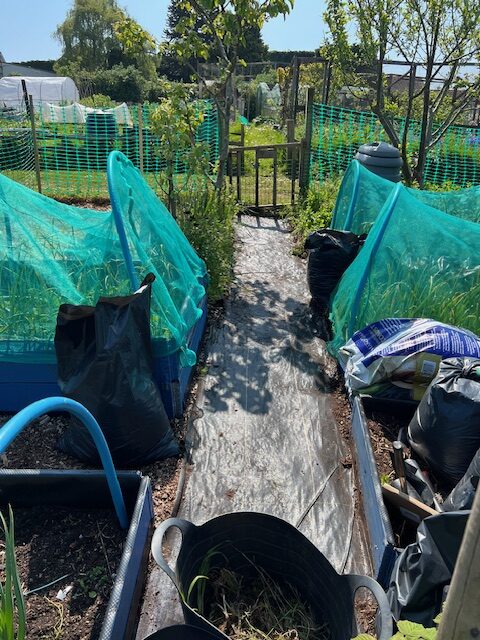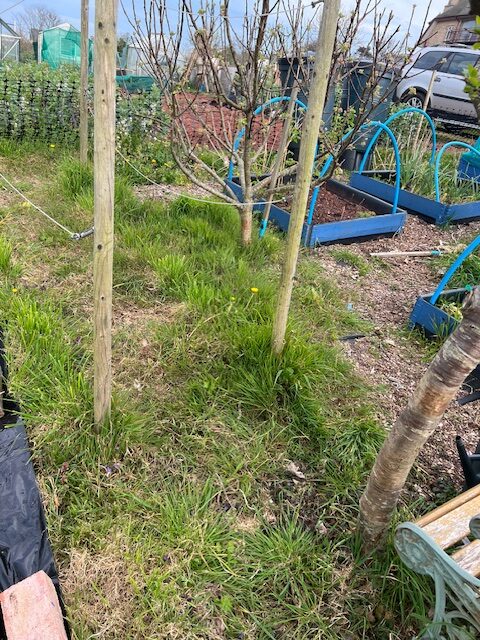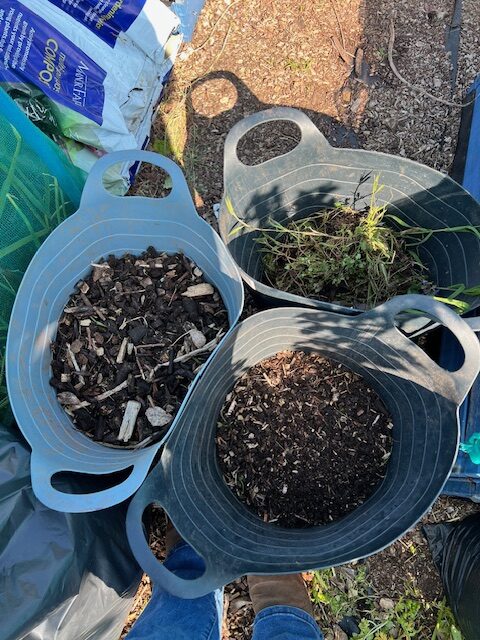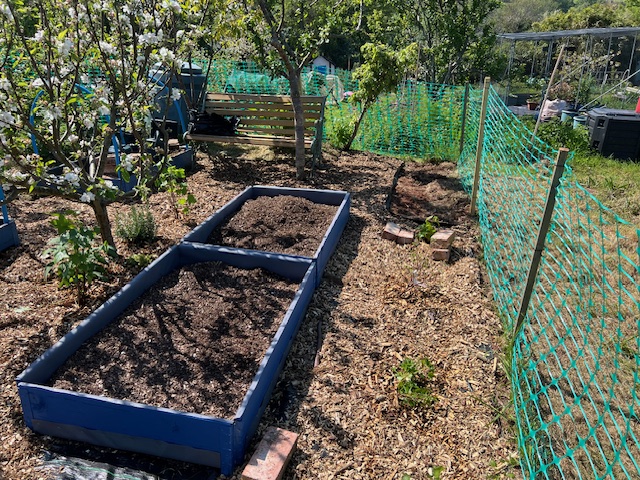When we were lucky enough to be given an allotment, I regarded any plants or trees we inherited as a bonus. Having seen the no man’s lands some beginner growers are allotted, swathed in mountains of detritus you’d need two skips to clear, I was very pleasantly surprised. Not only had the allotment recently been rotavated, giving us a clean slate to start from, but we were fortunate enough to inherit not just one, not two, but three mature fruit trees. Plus a rhubarb patch that continues to flourish with minimal effort. The gift that keeps on giving. As far as I’m concerned, we won the allotment lottery.
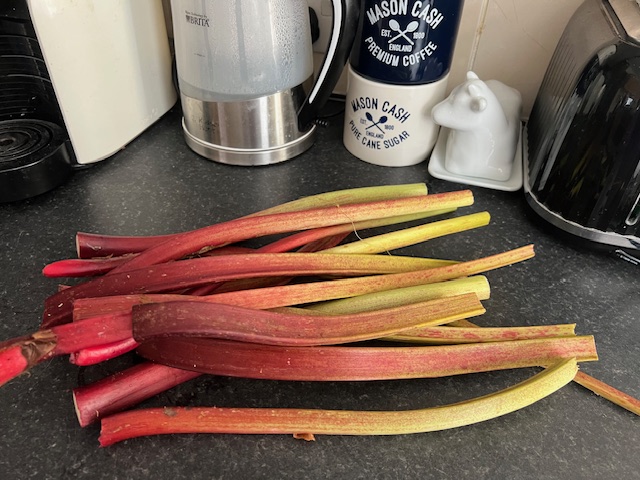
There were two mature plum trees and a pear tree. As for the plum trees, one is colossal, and very old. They are both a bit temperamental, producing one year then nothing the next. I have come to realise that that nice honey dew drop by the stem of a ripe plum is not the sign of good health but a very, very bad omen. Now I split them open when I see this only to find the plums riddled with coddling moth larvae, which usually whittle through around half my crop, but that’s another story.
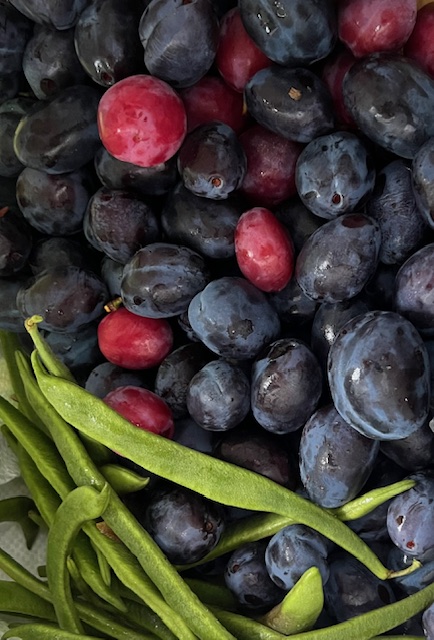
As for the pear tree, isn’t she a stunner? Look at her, laden with blossom.
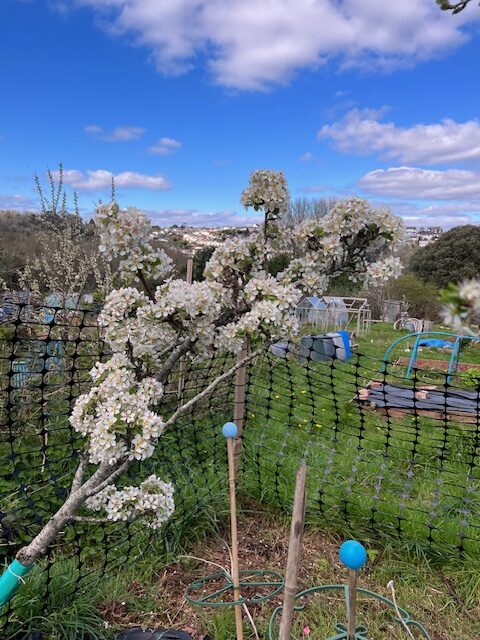
Except, in a whole six years, I haven’t harvested a single pear.
Au contraire, I hear you say. Look at her, laden with fruit.
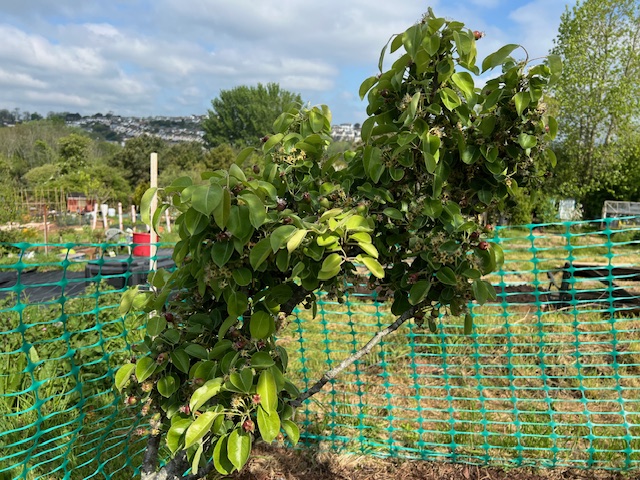
Except not one edible pear. EVER. Want to know why? Pear midge, that’s why.
Hate is an extreme word. Well, I loathe and detest this little parasite with every sinew of my being. Every year I’ve mounted an attack. Every year, I’ve suffered a dismal defeat. It always starts off looking good. Dripping with blossom, which slowly, slowly turns into fruitlets. Each May I wonder “Is this it… Could this be my year?” “Haha!” says the pear midge “Of course it isn’t!” promptly devouring MY crop, decimating every last pear.
A pear midge infestation is a particularly ugly and irritating thing. Having wintered in the soil, pupating, the midges emerge in spring, laying their eggs on the pear blossom just before bud break. The pear midge larvae bury into the fruitlets, eating them from the inside, eventually causing the pears to turn black and fall from the tree. And thus, this indescribably irritating little creature starts its cycle of devastation anew, robbing my beautiful pear tree of all of its fruit.
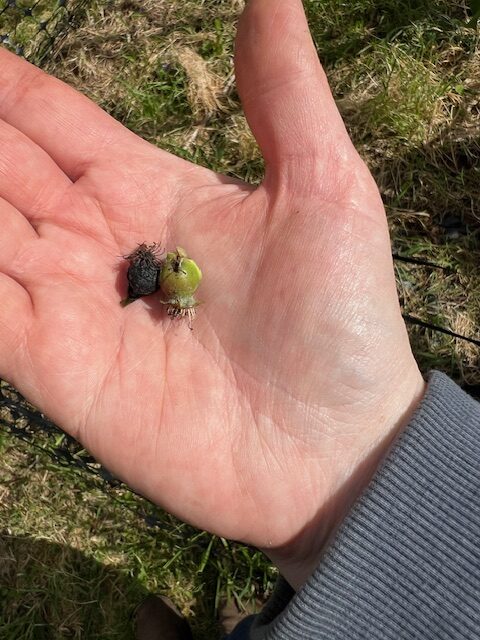
I don’t mind admitting this issue has had me apoplectic at times. It is soul destroying. Yes, I know they’re just pears, but they’re MY PEARS!
Each year I’ve become more and more determined that things would be different. For two years I’ve removed every single fruitlet – supposedly breaking the cycle. I don’t know how, but the little scallywags still found a way of coming back last year. As soon as I noticed the tell-tale signs again last spring, I was meticulous. I picked every last fruitlet as soon as they formed, incinerating them. I laid a tarp on the ground just to be sure. But I still couldn’t quite believe they had gone, having gone through the same process the previous year only for them to come back again.
This spring, just as the buds were about to break, I resorted to something I don’t usually do. I sprayed the tree. I don’t like using treatments. I’m not keen on relying on chemicals, even organic products. But let’s face it, if the farmers didn’t use pesticides, the shelves would be bare. I had to break the cycle.
If you’re looking for advice on which insecticide to use to treat pear midge, it isn’t that easy to find. Most sources focus on preventative measures, such as removing infested fruitlets early, cultivating the soil around the tree, and encouraging natural predators. Having tried all that to no avail, I knew I had to resort to something more drastic.
The previous season I tried a winter wash followed by a neem oil wash to zero effect. Mulching then covering the ground – same thing. They just found their way back again. Googling potential solutions, I saw reports of one allotmenteer appearing at dusk every evening to hoover up the clouds of pear midges with a portable vacuum with a long pipe affixed, apparently with some success. But that was a level of crazy dedication I just didn’t have. I have heard of growers being so tormented by these little blighters they’ve actually resorted to laying concrete beneath the tree to prevent the larvae burying down. Yes, it sounds extreme, but I had no idea how irritating pestilence could be until I went through this myself.
Who knew that my problem had such a simple yet seemingly effective solution. Just prior to budbreak, I sprayed the tree, once, with Provanto Ultimate Bug Killer Concentrate. I’m pleased to say that it appears to have worked.
I am mindful of bees (having happily coexisted with a bumblebee nest and tiny hornets’ nest all last summer). However, thankfully daytime temperatures were still in the single figures and the bees were yet to make an appearance. I sprayed early in the morning, just in case. I also strimmed underneath the tree and applied the pesticide to the grass, then re-covered it with tarpaulin. She appears to be in tip-top shape, finally.
Now the cycle is seemingly broken, I’m hopeful I won’t need to do this again. I am apprehensive of congratulating myself too soon, for fear of discovering a tree full of rotten black fruit tomorrow. However, fingers and toes crossed, she does appear to be coming along handsomely.
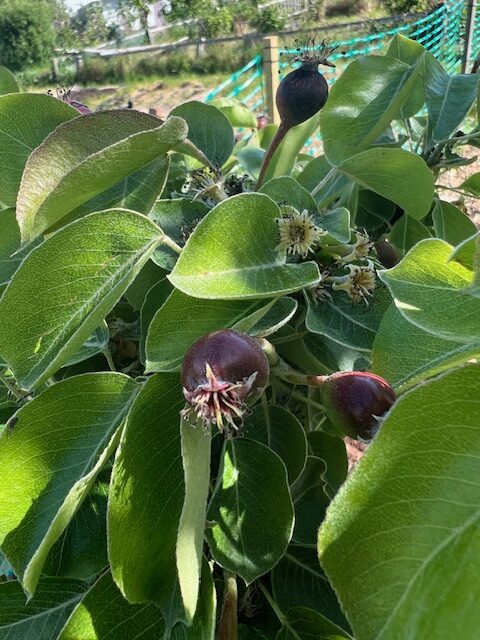
UPDATE: Having visited the allotment today, two weeks on, I see the little bleeders have done it again. I’m gobsmacked. Honestly, I really thought we’d cracked it. My mother-in-law, whose father was a farmer with orchards, says that once it sets in the tree is pretty much a goner. I’m starting to believe her.
I have removed all the fruit, yet again, so none can drop to the floor to continue its rotten cycle. However, having undertaken this process several times now, I’m not really sure what there is left to do. It is a nice tree, but I’ve had zero fruit from it and it’s taking up precious space. I also have another pear tree and I’m worried the problem could transfer to that one.
At this point I’m minded to repeat treat it through the year, treating the ground to get any pupae. I won’t be resorting to concrete. I think I’ll give it one last push, but if we lose the lot again next year (I’m loathed to say this) I think we’ll have to get rid of the tree.
Pear Midge: 6
Lindsay: 0
